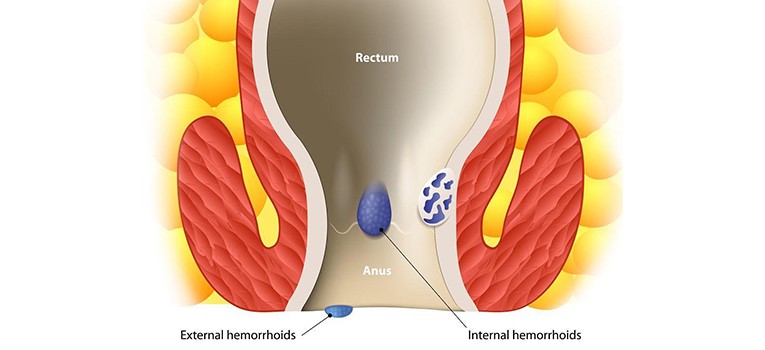Piles are blood vessels located at the end of the rectum, just inside the anus. While all of us have them, the medical condition referred to as piles, also known as haemorrhoids, occurs when they become swollen.
Understanding Piles
While it is still not fully clear what causes piles, it is believed that constipation is a major reason as the straining while passing bowels puts excessive pressure on the vessels. Additional reasons for piles include overweight and genetic predisposition.
People suffering from piles typically complain of symptoms that range from itching, mild discomfort, discharge to bleeding without pain. The bleeding occurs in cases of constipation when hard stools damage thin blood vessels in the anal area. In later stages, a sure sign of piles is the presence of a lump near the anus.
Does Piles Need Surgery?
Piles often clears up on its own although it can be a reoccurring problem for some. The treatment typically depends on its severity and in majority of early cases there is no requirement for surgery.
During initial stages, it can be treated with simple home measures such as dietary changes in conjunction with basic medication like topical creams to reduce the discomfort. The lifestyle and dietary changes that are recommended include drinking more water, having diet with higher fibre content, exercising regularly and reducing weight.
However if left untreated, haemorrhoids over time become more significantly inflamed and start coming out onto the anus. In the initial stages, the haemorrhoidal tissue goes back inside on its own or can being pushed inside but as it progresses, the lump of tissues remains outside causing intense pain. This condition is called protruding or prolapsed haemorrhoid.
In the early stages of prolapse, symptoms intensify to more painful conditions like feeling of a constant pressure or discomfort while sitting. At this point, surgery is not needed but in-office treatments could be used to give major relief. Three non-invasive options are available to treat piles with little to minimum discomfort. These are sclerotherapy, banding or rubber band ligation and infrared coagulation. These are all quick out-patient treatments.
In sclerotherapy a chemical solution is injected to reduce blood supply to the haemorrhoids causing them to decrease in size or shrivel. There is little or no pain associated in this procedure and is best suited for small internal piles.
In banding, a band is tied at the base of the haemorrhoids to make them shrivel and fall off. This is a slightly longer duration treatment as it might need more than two sittings, few months apart, to complete the treatment.
Infrared coagulation is another non-surgical option where the haemorrhoid tissue is burnt, stopping blood supply to it. Under this treatment heat, infrared light or even extreme cold is used to retract and shrink the haemorrhoidal tissue .
Surgery For Piles Needed Only In Severe Conditions
When the haemorrhoids become exceedingly enlarged, they protrude outside the anus and cannot be pushed back in. In these cases surgical intervention may be the only way to treat it.
Minimally invasive procedure MIPH or stapling is procedure of choice mostly, where the prolapsed tissue is fixed back inside using a stapling device and then sealed to cut blood supply.
Surgery options sometimes include haemorrhoidectomy, where the tissue lump is excised or removed surgically. Piles therefore can be easily treated without any surgery provided care is taken in the initial stages itself.




